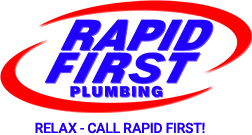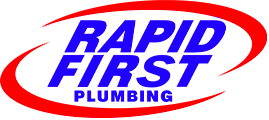Are you having water pressure issues? Is the water pressure too high or too low for your fixtures? Your water pressure regulator may need replacement or adjustment. Here are four reasons to have your regulator replaced or adjusted when you have water pressure issues.
1. Fluctuating Water Pressure Is Annoying and Destructive
When water pressure is too high, your supply pipes suffer from issues like loose fittings, water hammer, and banging. Your toilet tank assembly may be forced open to continuously leak clean water into the bowl.
When water pressure is too low, your tub, dishwasher, and washing machine take forever to fill. You can’t use more than one plumbing fixture at a time. Showers may dribble instead of spray. Avoid these issues by calling a plumber to take a look at the pressure regulator.
2. Fluctuating Water Pressure Has Multiple Causes
High water pressure is usually related to high pressure coming from your well or municipal water supply. If your water pressure regulator isn’t working correctly, the device isn’t reducing water pressure before the flow enters your pipes.
Low water pressure has a host of possible causes. Localized low water pressure issues are those that only affect one faucet. These localized low-pressure issues are resolved with replacement aerators, cartridges, or new supply lines.
Other causes of low water pressure include:
- Leaks in main supply lines
- Malfunction in water conditioner
- Fault in pump or booster pump
- Flushing or interruption of municipal lines
Check to make sure your main water valve is open all the way. If none of these issues is the cause of your low water pressure, suspect the water pressure regulator. A pressure regulator can malfunction and require cleaning, adjustment, or replacement.
3. Water Pressure Regulators Aren’t Always Well Adjusted
Pressure regulators are found on the main inlet pipe into your home’s plumbing system. They may or may not include a gauge to show the pressure of water exiting the regulator.
The pressure regulator is designed to reduce water pressure coming from high-pressure water supplies. A water pressure regulator operates using a spring-loaded diaphragm that constricts and then slowly releases water into the main household pipes.
In some cases, your pressure regulator is set too low and reduces the water pressure too much. The factory setting on a pressure regulator is normally between 45 to 55 psi. However, you may need pressure regulation between 40 and 70 psi to have proper water pressure throughout your home.
If you live in an area of Sacramento with incoming water pressure of only 35 psi, the standard pressure regulator can’t markedly increase water pressure. However, your plumber can install devices to enhance water pressure.
These devices include booster pumps, low-flow regulators, pressurized tanks, and check valves to augment your home’s low water pressure. Larger pipes installed at the main supply end of plumbing can increase pressure in smaller-diameter pipes.
4. Water Pressure Relief Valves Need Maintenance
Pressure relief valves wear out like any plumbing part or fixture. Internal components may corrode or become gummed up with calcium deposits or scale. Pressure regulators also have O-rings or washers that degrade and need replacement.
You must be careful when you clean, repair, or replace the pressure regulator. If not assembled and fitted correctly, the regulator will leak and defeat its purpose. Plumbing expertise is also necessary to adjust the settings on your pressure regulator. You could damage your pipes and other fixtures with the wrong pressure setting.
Hire a plumber to install a brand new pressure regulator. A professional plumbing service ensures that the regulator site is leak-free and secure. They can also cut and reattach the main pipelines into your plumbing system. The plumber can also calibrate and install a regulator gauge to help you monitor your home’s water pressure.
When you need lower or higher water pressure in your home, contact the experts at Rapid First Plumbing. We help solve and repair water pressure issues in the Greater Sacramento, California, area.


